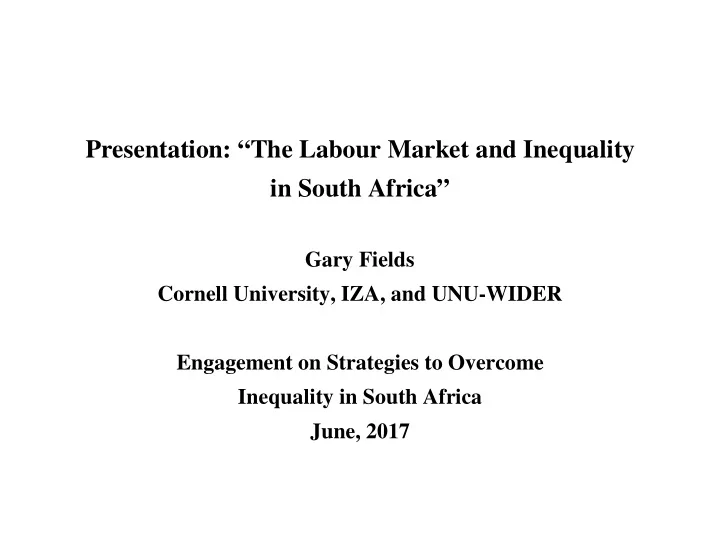

Presentation: “The Labour Market and Inequality in South Africa” Gary Fields Cornell University, IZA, and UNU-WIDER Engagement on Strategies to Overcome Inequality in South Africa June, 2017
Inequality: Which kind of inequality to be concerned about? Inequality between salient groups. Inequality between high-income people and others. Inequality between low-income people and others.
Policy objective: What is it? What are they? Social, economic, or a mix of the two? Which priorities? o Eliminating extreme poverty o Raising the standards of living of a larger group (e.g., poorest 40%) o Lowering high incomes? Others
For South Africa to consider: Making the labour market a focal point of policy (Note: “a”, not ”the”) Definition: The places where labour services are bought and sold o Wage employment o Self-employment South Africa’s employment problem: o Note “employment problem”, not “unemployment problem” o Why this focus? o Importance of labour income in total economic well-being
Two broad targets: o Employing the unemployed o Raising the earnings of the employed – “Working Hard, Working Poor” Two broad labour market policy interventions: o Creating more and better jobs for people to move into o Enabling those who are working to earn more for the work they do where they are
Policies in the labour market and impinging on the labour market: 1. Basic workplace protections 2. Harnessing the energies of the private sector 3. Economic growth, international trade, and foreign assistance 4. Labour market policies for generating more paid employment 5. Raising self-employment earnings Note: Education and skills development pervades these.
Choosing: For a particular policy intervention, identifying the benefits and quantifying them – but this is not enough To ask: What are the costs of doing it? Also to ask: Why is the social benefit-cost ratio higher for this particular recommended intervention higher than some other one? It’s not easy to choose in this way but let’s try.
Recommend
More recommend